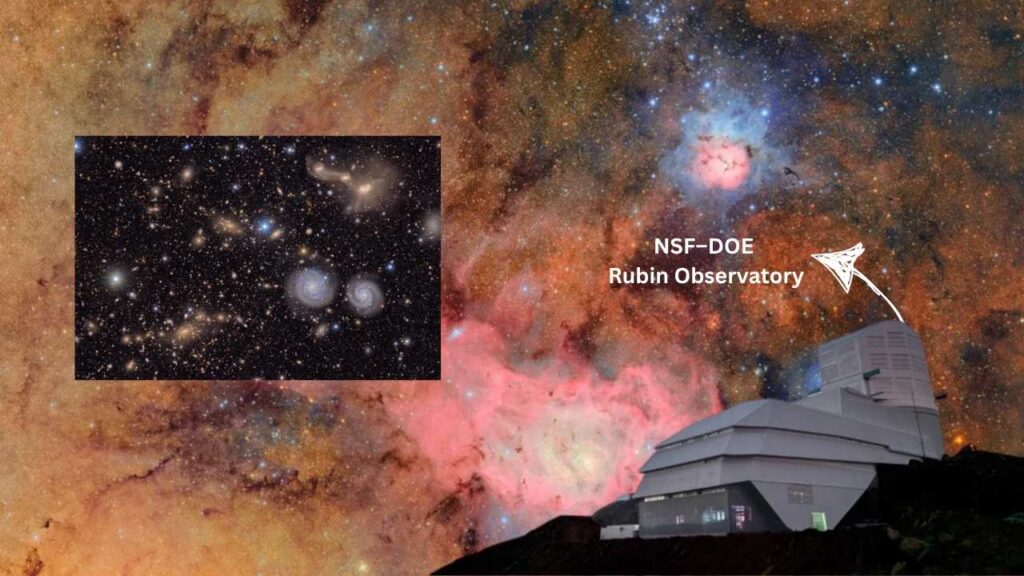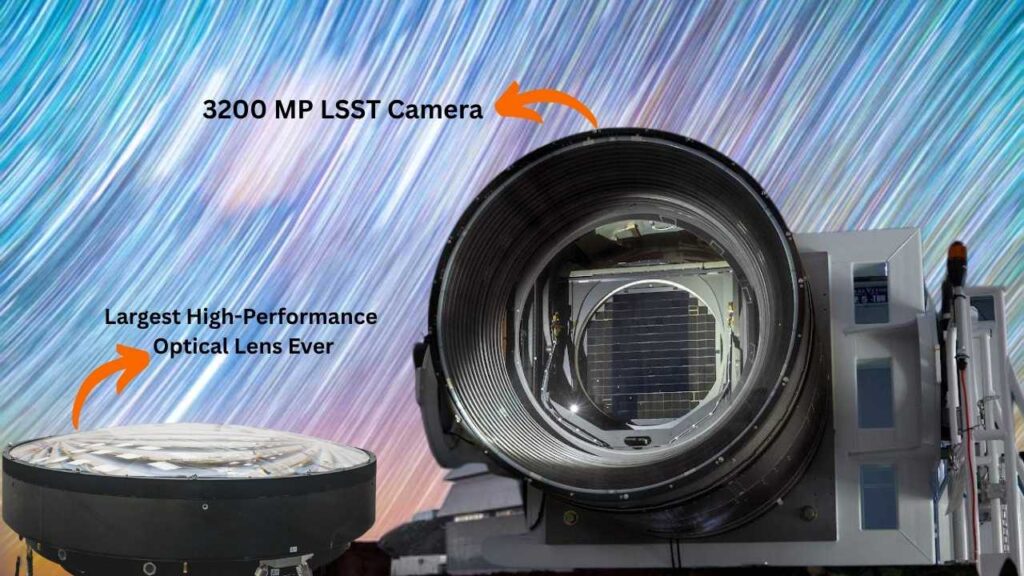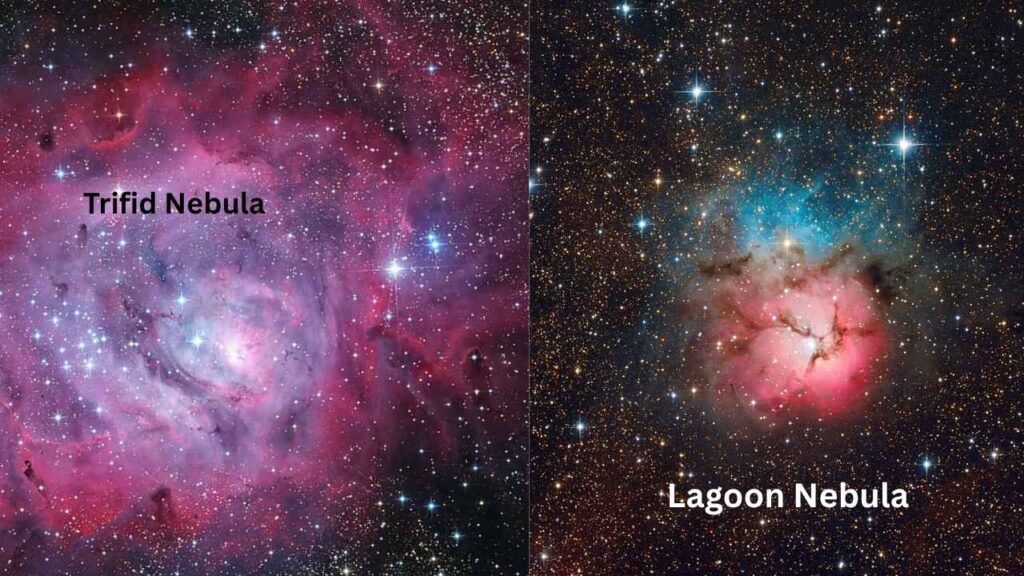NSF–DOE Rubin Observatory: The NSF–DOE Vera C. Rubin Observatory has just made history by unveiling its very first images of the cosmos, captured with the largest digital camera ever built. This moment marks a giant leap for astronomy, promising to transform our understanding of the universe and inspire both the public and professionals for generations to come. Whether you’re a curious 10-year-old or a seasoned scientist, these images—and the technology behind them—are set to change the way we see the night sky.

Perched atop Cerro Pachón in Chile, the Rubin Observatory is a collaboration between the U.S. National Science Foundation (NSF) and the Department of Energy (DOE). Its mission is to scan the southern sky with unprecedented speed and detail, creating a “cosmic movie” that will help answer some of the biggest questions in science: What is dark matter? What is dark energy? How did our galaxy form? And are there any asteroids out there that could threaten Earth?
NSF–DOE Rubin Observatory
| Feature | Details |
|---|---|
| Location | Cerro Pachón, Chile |
| Camera | 3.2-gigapixel (largest ever built) |
| Telescope | 8.4-meter Simonyi Survey Telescope |
| First Images | Trifid & Lagoon Nebulae, Virgo Cluster, millions of galaxies, 2,104 asteroids |
| Data Output | 20 terabytes per night |
| Survey Duration | 10 years (Legacy Survey of Space and Time – LSST) |
| Sky Coverage | Entire southern sky every 3–4 days |
| Public Access | Data and images available via rubinobservatory.org |
| Career Impact | Opens new research opportunities in astrophysics, planetary science, and data science |
The NSF–DOE Vera C. Rubin Observatory has officially opened its digital eyes, offering humanity a new way to explore the cosmos. With its record-breaking camera and ambitious decade-long survey, Rubin is set to revolutionize astronomy, inspire new generations, and make the wonders of the universe accessible to all. Whether you’re a student, a scientist, or simply someone who loves looking up at the stars, the Rubin Observatory invites you to join the adventure.
What Makes the Rubin Observatory Special?
The Largest Digital Eye on the Universe
The Rubin Observatory’s camera is a technological marvel. At 3.2 gigapixels, it’s so powerful that a single image would require about 400 4K TVs to display at full resolution! This camera, mounted on an 8.4-meter telescope, can capture sweeping views of the sky—much wider than any previous observatory. In just over 10 hours of test observations, it has already revealed:
- Millions of distant galaxies
- Thousands of asteroids (including 2,104 newly identified ones)
- Stunning details in star-forming regions (nebulae) and galaxy clusters
Cosmic Movies: A Time-Lapse of the Universe
Unlike traditional telescopes that take static snapshots, the Rubin Observatory will scan the entire southern sky every three to four days for a decade. This means it will create a time-lapse “movie” of the cosmos, allowing scientists to watch how stars, galaxies, and even asteroids change over time. This approach is called the Legacy Survey of Space and Time (LSST).

Opening Up the Universe to Everyone
All data and images from the Rubin Observatory will be made available to the public. Anyone, anywhere, can explore the universe using easy online tools like the Skyviewer and the Rubin Science Platform. This is a huge step forward for open science, making advanced astronomy accessible to students, teachers, amateur astronomers, and professionals alike.
The First Images: A Closer Look
Nebulae: The Trifid and Lagoon
One of the first images released is a breathtaking composite of the Trifid Nebula and the Lagoon Nebula—vast clouds of gas and dust where new stars are born. This image was created from 678 separate exposures taken over just seven hours. It reveals details that were previously invisible, such as faint filaments and small star clusters, thanks to the observatory’s ultra-high resolution.

Galaxies: The Virgo Cluster
Another early image showcases the Virgo Cluster, a massive collection of galaxies millions of light-years away. The clarity and depth of this image allow astronomers to study the structure and evolution of galaxies in ways never before possible.
Asteroids: Mapping Our Solar System
In just its first 10 hours, the Rubin Observatory identified over 2,100 asteroids—including seven near-Earth objects that had never been seen before. Importantly, none of these pose a threat to our planet. This rapid discovery rate is a game-changer for planetary defense and solar system science.
Why Does This Matter? (For Kids and Pros Alike)
For Young Learners
Imagine having a camera so powerful you can see millions of galaxies and thousands of asteroids, all from your computer! The Rubin Observatory makes space exploration fun and accessible. You can use their online tools to zoom in on nebulae, watch galaxies spin, and maybe even discover something new yourself.
For Professionals and Researchers
The Rubin Observatory is set to gather more data about the universe than all previous optical telescopes combined. This data will enable:
- New discoveries in astrophysics (dark matter, dark energy, galaxy formation)
- Tracking of asteroids and comets that could impact Earth
- Advances in data science and machine learning (handling 20 terabytes of data per night)
- Cross-disciplinary research in physics, computer science, and planetary science
How to Access Rubin Observatory Data and Images
- Visit the Official Website: All images and data are available for public viewing and exploration.
- Use the Skyviewer: Explore images interactively, zooming in on your favorite cosmic features.
- Check Out the Rubin Science Platform: Download datasets, run your own analyses, or join citizen science projects.
- Watch the Livestreams: Major events, like today’s “First Look,” are broadcast live and available for replay.
Practical Advice: Getting Involved
- Students & Teachers: Use Rubin’s public data for science projects, classroom lessons, or astronomy clubs.
- Amateur Astronomers: Compare your own observations with Rubin’s images, or participate in online discovery challenges.
- Researchers: Apply for access to advanced datasets, collaborate on open-source software, or propose new research using Rubin’s unique capabilities.
- General Public: Stay curious! Follow the observatory’s news, join virtual tours, and share your discoveries with friends and family.
FAQs About NSF–DOE Rubin Observatory
What is the Rubin Observatory?
The Vera C. Rubin Observatory is a state-of-the-art astronomical facility in Chile, designed to scan the southern sky and create the largest, most detailed digital map of the universe ever made.
How big is the camera?
It’s the largest digital camera ever built for astronomy—3.2 gigapixels! That’s about 3,200 times the resolution of a standard smartphone camera.
What are the first images?
They include the Trifid and Lagoon Nebulae, the Virgo Cluster of galaxies, millions of distant galaxies, and over 2,100 newly identified asteroids.
How can I see the images?
Visit the official website listed in the Key Highlights table. Images and data are free and open to everyone.
What’s the LSST?
The Legacy Survey of Space and Time is a 10-year project where the Rubin Observatory will scan the entire southern sky every few nights, creating a time-lapse movie of the universe.
Why is this important for science?
Rubin’s data will help answer fundamental questions about the universe, such as the nature of dark matter and dark energy, the formation of galaxies, and the tracking of potentially hazardous asteroids.






